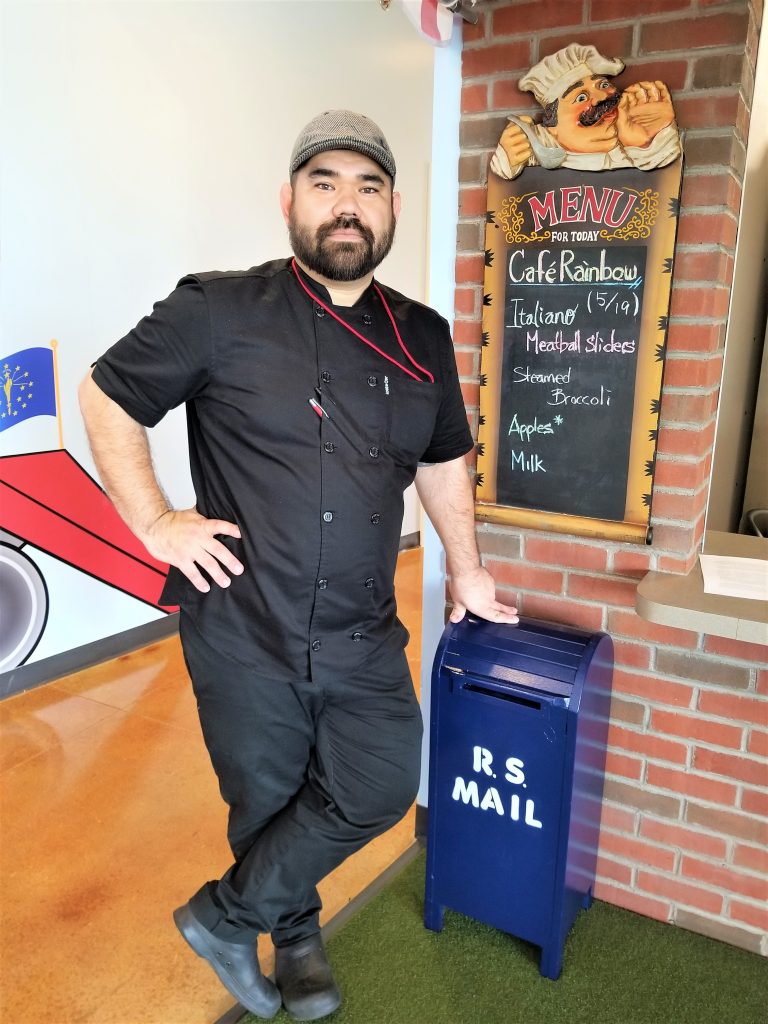Writer / Seiji Bryant
 When I was offered the opportunity to work for Rainbow Station, I immediately knew it was the right place for me. Having worked primarily in fine dining, I knew it would be a change of pace to convince small children, from infant to age 5, to experience the wonderful flavors I had been working with for the previous few years. But having two children myself, I already had an idea of how to get farm fresh foods direct to table.
When I was offered the opportunity to work for Rainbow Station, I immediately knew it was the right place for me. Having worked primarily in fine dining, I knew it would be a change of pace to convince small children, from infant to age 5, to experience the wonderful flavors I had been working with for the previous few years. But having two children myself, I already had an idea of how to get farm fresh foods direct to table.
Knowing that Rainbow Station wanted a chef and not someone who could just reheat frozen food, I knew these children were going to have experiences that most kids do not get.
I raised my own children on different cuisines from all over the world, having lived in several different countries. Some of our favorite days, for me, the kids, and their parents, are on our International Days we have every two weeks. The children have already been able to experience real Mexican food, Greek food, Turkish food, Japanese food, Indian food, Chinese food, Thai food, and Okinawan food since we opened just five months ago.
So, how do you get children to eat foods that look strange to them?
First, the goal is to get them to try it, not to make them eat the meal. Then we focus on something familiar to them. Turkish stew has meatballs and potatoes. Rice is common to many dishes. My favorite Thai Curry has pineapple in it. Reminding the kids of the foods they already like in such a way that it is like explaining the changing of outfits on dolls, “Let’s see how it tastes when we do this!”
We want them to see it as something appealing, feel it and know it is similar to other textures they have eaten, smell it, so they wet their appetites, and taste it for the full experience. If they decide they don’t like it, fine, move on and let them eat what they will from the healthy choices left.
One of the most rewarding educational experiences I will be able to enjoy with the students is our new garden where the kids get to feel the soil, watch the plants grow daily, learn about the process of the food life cycle and harvest what we have grown. As they learn to appreciate where food comes from, they really do stop to think about the intricacies of the foods provided to them and the efforts that go into food production.
Part of that food appreciation goes into the food preparation itself. Because of the small mouths I get to feed, I individually cut up fresh fruit into tiny bite size pieces, but I always make sure the kids get to feel and smell the rind of an orange or to see the seeds in a strawberry. That tactile connection, the aromatic sensation, and visualization of foods help bond the children to the food. Those bonds with familiar foods help them continue to explore and desire new and exciting foods.
If you would ever like to come in and see what our students are eating, I’d love to have you stop by and see us in action. Please stop by the Rainbow Station Café, and someone from our wonderful staff can even show you the garden and orchard.





